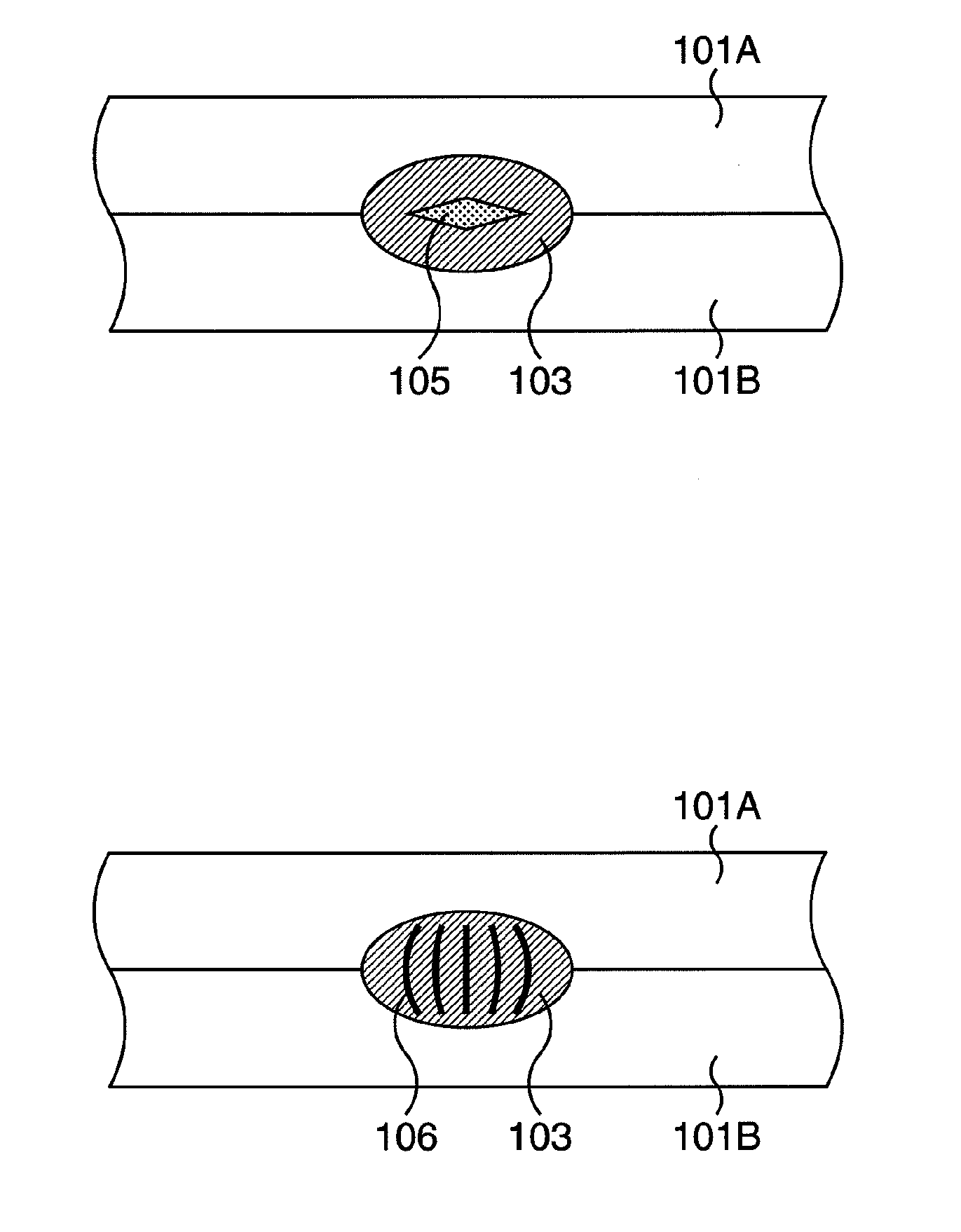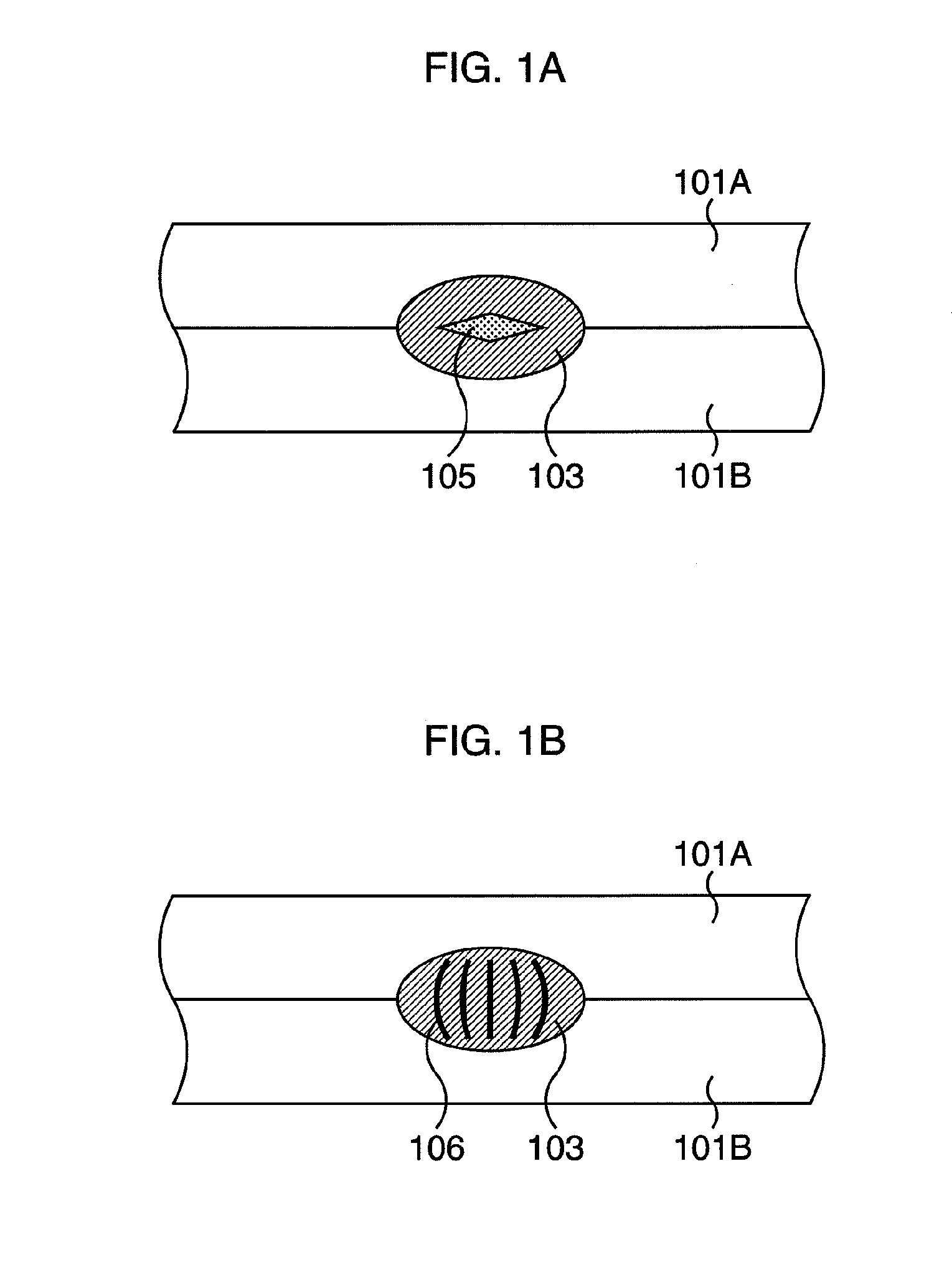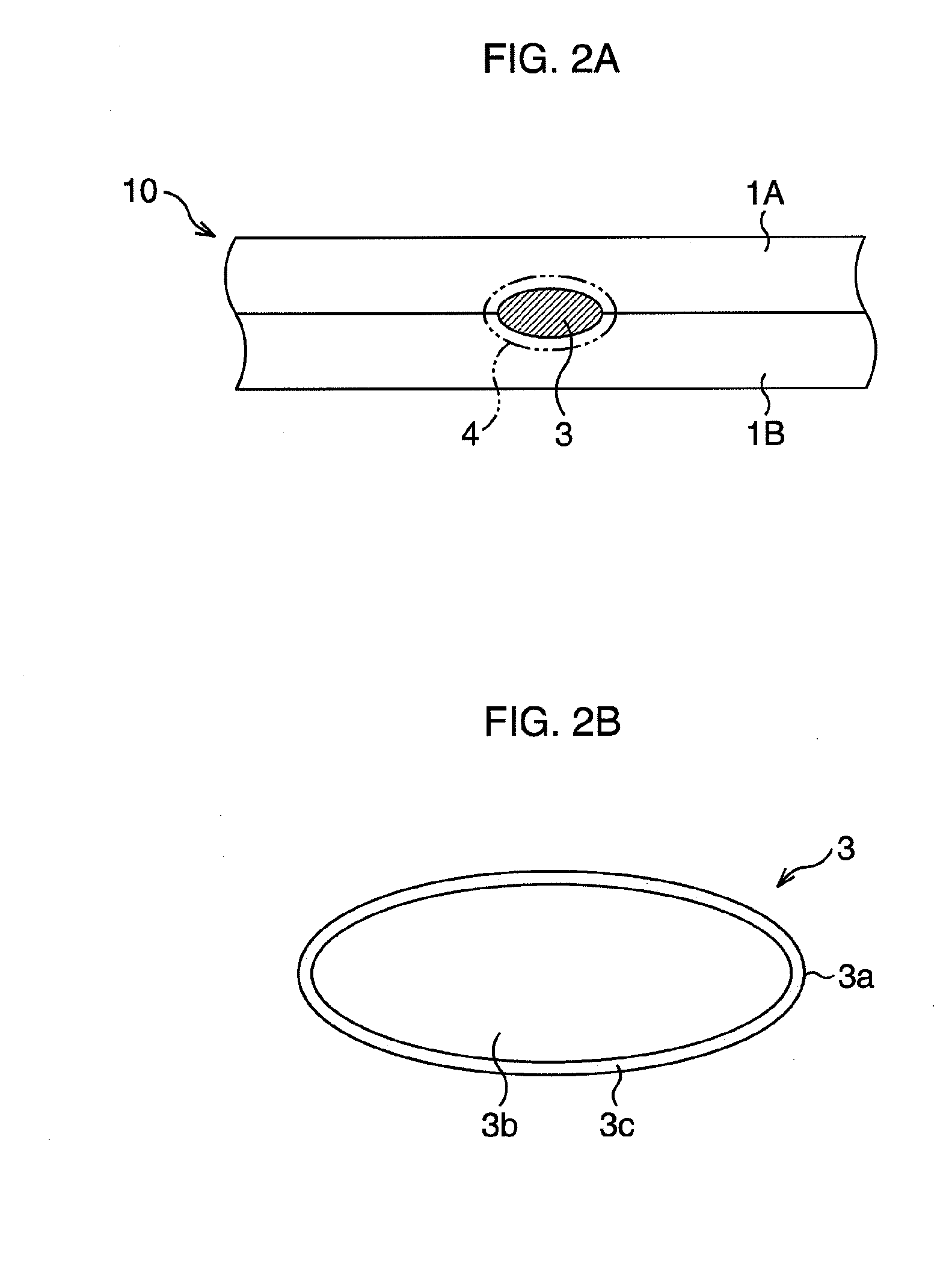Spot welded joint and spot welding method
a welding joint and spot welding technology, applied in welding/soldering/cutting articles, manufacturing tools, transportation and packaging, etc., can solve the problems of spot welding joint tensile strength (joint strength) reduction, fluctuation of welding strength, and inability to obtain good fracture appearance, etc., to achieve high reliability, good workability, and good fracture appearance
- Summary
- Abstract
- Description
- Claims
- Application Information
AI Technical Summary
Benefits of technology
Problems solved by technology
Method used
Image
Examples
first embodiment
[0134]First, a first embodiment of the present invention will be described. FIG. 2A is a schematic diagram illustrating a spot welded joint according to the first embodiment.
[0135]As illustrated in FIG. 2A, in a spot welded joint 10 according to the first embodiment, two thin steel plates 1A and 1B are joined by spot welding via a nugget 3. Further, a heat-affected zone 4 exists in a periphery of the nugget 3. A tensile strength of either one or both of the thin steel plates 1A and 1B is 750 MPa to 1850 MPa, and a carbon equivalent Ceq thereof is equal to or more than 0.22 mass % to 0.55 mass %. Here, the carbon equivalent Ceq is represented by a formula (1).
Ceq=[C]+[Si] / 30+[Mn] / 20+2[P]+4[S] (1)
[0136]([C], [Si], [Mn], [P], and [S] each represent respective contents (mass %) of C, Si, Mn, P, and S.)
[0137]Further, as illustrated in FIG. 2B, at least in a nugget outer layer zone 3c being a zone except a similar figure zone 3b which is 90% as large as an outer shape 3a of the nugget 3 ...
second embodiment
[0206]Next, a second embodiment of the present invention will be described. The second embodiment is a method for performing spot welding of the above-described steel plates 1A and 1B, and FIG. 3A to FIG. 3C are schematic diagrams illustrating a spot welding method according to the second embodiment.
[0207]In the second embodiment, first, as illustrated in FIG. 3A, two thin steel plates 1A, 1B being materials to be welded are overlapped each other. Then, while pressing welding electrodes 2A, 2B made of a copper alloy, for example, from both sides in relation to an overlapped portion of the thin steel plates 1A, 1B, that is, in a manner to sandwich from upper and lower directions in an example illustrated in FIG. 3A, predetermined energization is performed. The above energization includes welding energization and post-heating energization, details being described later. Then, as a result of such predetermined energization, a portion in which metal is melted is formed between the two t...
third embodiment
[0240]Next, a third embodiment will be described. In the third embodiment, except that welding energization is performed under a condition that a pressurizing force EF (N) of welding electrodes 2A and 2B against thin steel plates 1A and 1B fulfils a formula (7) below, similar processings as those of the second embodiment are performed.
1470×h≦EF1960×h (7)
[0241]As described above, if the pressurizing force EF is less than “1960×h” (N), it becomes difficult to suppress an occurrence of a defect or a crack in a nugget 3, and thus when a thickness or strength of a steel plate increases, a defect or a crack sometimes occur. On the other hand, if the pressurizing force EF is less than “1960×h” (N), an effect that joint strength in a peel direction is increased prominently can be obtained. This is for the following reasons. In other words, as the pressurizing force EF is reduced, heat removal from welding electrodes 2A, 2B is reduced and penetration (a nugget thickness) is increased. Thus,...
PUM
| Property | Measurement | Unit |
|---|---|---|
| tensile strength | aaaaa | aaaaa |
| grain diameter | aaaaa | aaaaa |
| tensile strength | aaaaa | aaaaa |
Abstract
Description
Claims
Application Information
 Login to View More
Login to View More - R&D
- Intellectual Property
- Life Sciences
- Materials
- Tech Scout
- Unparalleled Data Quality
- Higher Quality Content
- 60% Fewer Hallucinations
Browse by: Latest US Patents, China's latest patents, Technical Efficacy Thesaurus, Application Domain, Technology Topic, Popular Technical Reports.
© 2025 PatSnap. All rights reserved.Legal|Privacy policy|Modern Slavery Act Transparency Statement|Sitemap|About US| Contact US: help@patsnap.com



